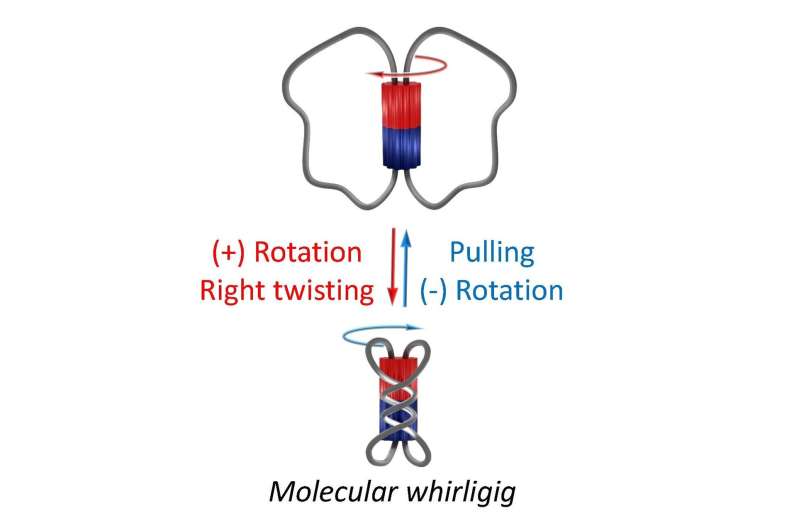All wound up: A reversible molecular whirligig

Over the last few decades, researchers have built minuscule molecular machines that rotate or shuttle other molecules. However, it's difficult to determine the mechanical work and forces that these tiny contraptions produce, which is important when using them as nanorobots or in artificial muscles. Now, in the Journal of the American Chemical Society, researchers report molecular motors that twist and untwist like whirligig toys—enabling the measurement of the energy and torque of their rotations.
Nature already makes a variety of molecular machines, whether in the hair-like flagella that propel bacteria or in the rotating enzyme that produces the energy-storing compound adenosine triphosphate (ATP). Researchers have been creating their own versions with the goal of using them as transporters or pumps, or to make materials that can store and release mechanical energy. Although many designs now exist, it remains difficult to engineer them for repetitive rotations and to measure how much work—or force applied over a distance—they can exert. So, Nicolas Giuseppone and colleagues set out to build molecular machines with reversible cyclic motion that would enable them to do just that.
The researchers constructed a figure eight-shaped molecular machine with a rotary motor in its center and a polymer chain in each of its two loops. Ultraviolet light activated rotation at the intersection of the figure-eight and caused the loops to twist around each other one, two, or three times. When the light was turned off, the machines with smaller loops gradually unwound to relieve strain, just like the unwinding of a whirligig toy. The researchers then conducted twisting-untwisting experiments at different temperatures to calculate the work, force and torque. The whirligig exerted similar torque to the well-known enzyme that produces ATP, thus providing a promising look into the mechanical energy that could be stored and released by these miniscule machines.
More information: Chuan Gao et al, Light-Driven Molecular Whirligig, Journal of the American Chemical Society (2022). DOI: 10.1021/jacs.2c02547
Journal information: Journal of the American Chemical Society
Provided by American Chemical Society





















